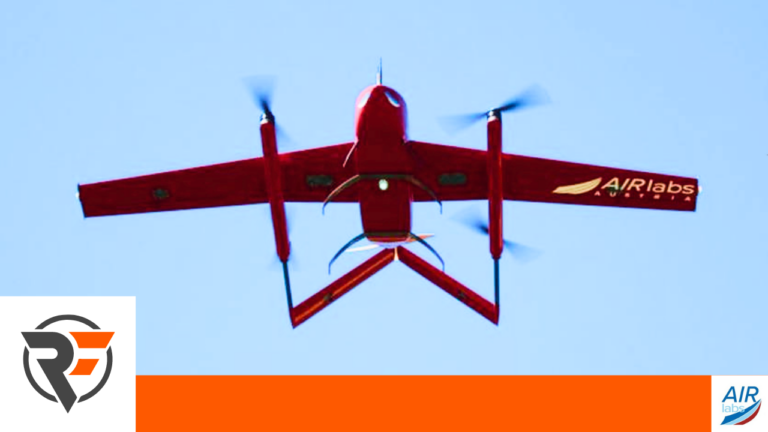
AIRlabs assess cellular connectivity in test facilities, in partnership with AirborneRF
AIRlabs Austria, a national consortium dedicated to UAS innovation, is working with Dimetor to assess cellular connectivity within their large-scale test facilities. Using Dimetor’s AirborneRF software, this initiative aims to address the challenge of ensuring cellular connectivity for drones across Austria’s flight test zones, which is crucial for the safety and viability of BVLOS operations. “The successful benchmarking of connectivity in Austria’s airspace is a significant milestone. By using AirborneRF, we’ve set a new standard for safety and reliability in BVLOS operations, which we believe will be crucial for the future of unmanned aviation in Austria and beyond.” says Paul Dolejschi Project and Account Manager at Dimetor. “For AIRlabs, as the company with the largest alpine drone test area in Europe, it is crucial to acquire extensive knowledge about our test area to ensure the highest level of safety for our clients. A significant milestone in this endeavor was the Innovation Project conducted in collaboration with Dimetor and A1, which greatly enhances the safe execution of BVLOS operations. I am particularly pleased that we successfully conducted the tests under AIRlabs’ BVLOS Operation Authorization,” says Roswitha Wiedenhofer-Bornemann, Managing Director of AIRlabs Austria. Both companies, Dimetor and AIRlabs Austria, are known for

Dimetor Named Winner of the EY Scale-Up Award in SpaceTech and Aviation
Dimetor has been awarded the Scale-up of the Year title in the Spacetech and Aviation category at the EY Scale-up Award 2024, a notable recognition for its pioneering automated data processing and exchange platform bridging telecommunications and aviation systems. This accolade is part of an initiative by EY and its 32 partners to spotlight and support high-potential start-ups in Austria. As one of the most challenging awards to win in the startup community, it is an honor to receive such a prize. Event Overview Now in its third year, the EY Scale-up Award aims to foster the growth of domestic start-ups. The event saw over 250 applications this year, reflecting a vibrant start-up ecosystem. The competition identified scale-ups and rising stars across twelve categories and a particular category, “Spin-off of the Year.” A robust multi-stage application process, evaluated by more than 60 high-caliber jury members, ensured a thorough assessment of each contender. The process included growth maturity assessments, benchmarking, and live pitch presentations. Winners received consulting packages worth approximately 150,000 euros to support their growth journeys. Judging Process The jury was organized into six areas of expertise, considering start-ups on the following criteria: 1. Business Model & Go-to-market Strategy 2.
Thomas Neubauer discusses Airborne RF™
Commercial drones are poised for significant growth, with future operations extending beyond line-of-sight connectivity. This expansion will enable new services across various industries and pave the way for drone taxis. Communication for drone command and control is expected to rely on cellular networks. A solution called airborne RF has been developed to calculate safe airspace for drone operations, generating three-dimensional corridors for safe flight and integrating this information with aviation systems.
Airborne RF™ – What is drone technology all about?
Autonomous drones are poised to revolutionize several industries by enabling applications like public safety, industrial inspections, package delivery, and even drone taxis. However, a critical requirement for these drones is the ability to maintain permanent connectivity to cellular networks for seamless communication with flight management systems. To address this, a software solution named “Airborne RF” has been developed, which facilitates integration with cellular network operators.
Inmarsat expands Velaris partner network with Dimetor and Bellwether to support BVLOS drone operations
Inmarsat has expanded the Partner Network for its Velaris UAV connectivity solution with the addition of software company Dimetor, which facilitates Beyond Visual Line Of Sight (BVLOS) operations in cellular networks, and Bellwether Industries, an Urban Air Mobility (UAM) solutions provider for intra-city travel, says the company press release.
Comp4Drones demonstration reveals need to expand network capabilities to meet demand
On October 19, during the SESAR Comp4Drones research event in Spain, Latvian telecoms company LMT reports a demonstration piloting a drone located in Latvia from a 3500+ km distance. This was an attempt to explore future business possibilities for cellular network-connected drone technologies, as well as for network infrastructure providers. A mobile network was used as a communication channel for cross-country drone piloting, while AirborneRF was responsible for network coverage forecasting and remote route validation.
“AirborneRF will provide the technical bridge to worldwide BVLOS drone operations”
For most commercial drone operators worldwide there is one overriding concern: how can we unlock the true potential of the industry by providing secure beyond visual line of sight (BVLOS) services? The theoretical answer has been known for some time. If we could safely and seamless connect drone operations to mobile network operator (MNO) networks with a guaranteed level of reliability and robustness it will open the door to a whole new era of drone operations. It will mean more autonomy, more capable command-and-control, an airspace management system based in tracking and communications over long distances, real-time streaming high definition video and a host of other applications.
A route to safe UTM with secure data exchange between the aviation and cellular communities – new paper
Following joint activity by the Global Unmanned Traffic Management Association (GUTMA) and Global System for Mobile Communications (GSMA), new solutions are available to allow efficient data exchange between Mobile Network Operators (MNOs) and UTM ecosystems, says a report by Commercial Drone Professional. The report stems from a collaboration set up in 2019 called Aerial Connectivity Joint Activity (ACJA) and comprises several working groups promoting mutual understanding and interchange of data between the aviation and cellular communities.
Inmarsat expands Velaris partner network with Dimetor and Bellwether to support BVLOS drone operations
Inmarsat has expanded the Partner Network for its Velaris UAV connectivity solution with the addition of software company Dimetor, which facilitates Beyond Visual Line Of Sight (BVLOS) operations in cellular networks, and Bellwether Industries, an Urban Air Mobility (UAM) solutions provider for intra-city travel, says the company press release.
LMT and partners’ joint technologies enable UAVs to integrate into active air traffic, demonstrates GOF 2.0
The GOF 2.0 roadshow in Riga demonstrated successful integration of drones into manned airspace at the GOF 2.0 Roadshow in Riga. The demonstration was conducted by LMT in collaboration with Latvijas Gaisa Satiksme (LGS), the local air traffic controller, and the GOF2.0 consortium.
